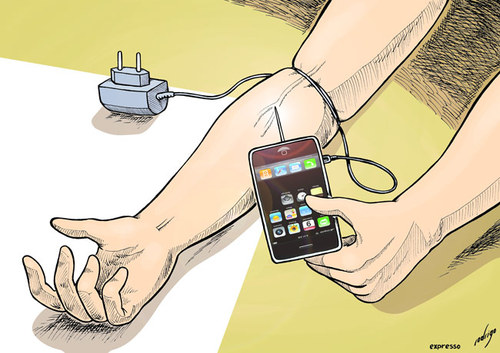
Why is Gender Ideology Important?
Ideology is a comprehensive set of normative beliefs, conscious and unconscious ideas, that an individual, group or society has. So gender ideology refers to attitudes regarding the appropriate roles, rights and responsibilities of men and women in society. The concept can reflect these attitudes generally or in a specific domain, for example as an economic, familial, legal, political, and/or social domain. so the gender ideology provides coordinates for appropriate masculine and feminine behavior. The Ideology focus mainly on the ideological shifts in society in response to feminism and the struggle over male hegemony (Thomson Gale, 2008).

The feminism movements goal is to define and achieve equality among the sexes when it comes to topics, such as: politics for equal leadership roles , economics for equal pay , culture for how people view gender traditionally within a religious or cultural setting, personally for how we see ourselves and society for how we treat each other.
The traditional gender ideology is about the family, where men fulfill their family roles through instrumental, breadwinning activities, and women fulfill their roles through nurturant, house carer and parenting activities. The two most common traditional roles women were represented in under patriarchy were the happy housewife, and the sex object/glamorous ideal.
For a long time women has been fighting to ”get out” from the housewife bubble, but in todays society studies has shown that women are re-embracing the role of the housewife, as a right rather than a limitation (Joseph Malicke, 2013).
But the absolute biggest problem we have in todays society is sexual harassment’s against women in the home, at the work place, and even out on the street. We all should be really grateful, even the criminals in this case, that the #MeeToo campaign appeared this year and dragged all the attention it did/does deserve. For me as a young filmmaker in the entertainment business Im embarrassed. That we as individual in 2017 still haven’t developed that far that we understand whats wrong and right. We all (especially men) needs to take responsibility. Georgina Lawton writes in TheGuardian;
”To witness a global community of female solidarity take place online was empowering and goosepimple-inducing, but it is important to continue this conversation in real life, with each and every man we know, in order to initiate the kind of change all women have been hoping for.” (Georgina Lawton, 2017).
This campaign took of because its real. It is not glamours, but its real and its going on everyday all around the world. Me myself, as a filmmaker, has a big responsibility to Portray women and men in a equal, and maybe most important, respectfully way on the screen to be a part of a change that needs to be done in the global society. We need yo start now, as soon as possible to create a respectful view on how women should, and deserve to be treated in our society, so that future generations grow up with a better understanding of whats right and wrong. Something that earlier generations have failed with whit a lot of people (Nadia Khomami, 2017).
Its time to take responsibility and create a safe environment for all women out there.
Reference List:
Thomson Gale, Gender Ideology, 2008, [online] available at: http://www.encyclopedia.com/social-sciences/encyclopedias-almanacs-transcripts-and-maps/gender-ideology
Joseph Malicke, Gender Ideology and Evaluations of a Male versus Female Target: Effects of Emphasizing versus Downplaying Gender Differences, 2013, [online] available at: https://scholar.colorado.edu/cgi/viewcontent.cgi?article=1627&context=honr_theses
Georgina Lawton, #MeToo is here to stay. We must challenge all men about sexual harassment, 2017, [online] available at: https://www.theguardian.com/lifeandstyle/2017/oct/28/metoo-hashtag-sexual-harassment-violence-challenge-campaign-women-men
Nadia Khomami, #MeToo: how a hashtag became a rallying cry against sexual harassment, 2017, [online] available at: https://www.theguardian.com/world/2017/oct/20/women-worldwide-use-hashtag-metoo-against-sexual-harassment
The Concept of Culture Jamming
Culture jamming os a form of political and social activism, which, by means of fake adverts, hoax news stories, pastiches of company logos and product labels, computer hacking, etc, draws attention to and at the same time subverts the power of the media, governments, and large corporations to control and distort the information that they give to the publican order to promote consumerism. So most of all culture jams are simply aimed at exposing questionable political assumptions behind consumption. But to understand culture jamming better we need to understand how consumerism is used to control the society (Mark Dery, 2010).
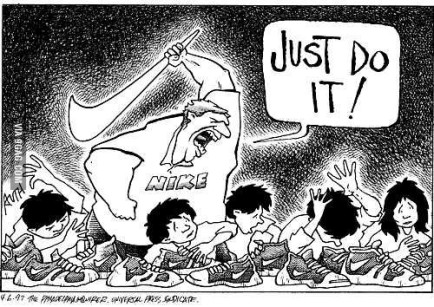
The amount of material things people by today is scary. We buy things, not because we need it, but because we want it. we want to consume brands to ”form” our personalities by it. The companies/goverments tells us that this is something we need, so we create this fake image of what we need to have just to be a part of society. Black Friday is the day following thanksgiving in the United States (the fourth Thursday of november), and has been regarded as the beginning of the Christmas shopping season in the U.S., and most major retailers open very early (and more recently during overnight hours) and offer promotional sales. The most unpleasant thing with this day is that grown people fight in the stores over cut priced consumer goods on the shopping mall floor like animals. How can humans go so far? Although our species has always lusted over inanimate objects like gold or diamonds or oil paintings or just about any other functionally useless signifiers of wealth, the desire of buying materials on Black Friday is a rare phenomenon.
Consumerism is a socioeconomic model built upon the engineering of desire, The materialistic urge within the human psyche has always existed, but in the early 20th century the advertising industry began to use psychological techniques to make us want materialistic stuff harder than ever, which powers capitalism (Aleks Eror, 2016).
So culture jamming exist to disrupt or ruin reputation of mainstream cultural institutions. Culture jammers use their familiarity with the codes and conventions of advertising to throw a ”spanner” in the production of meaning by creating spoofs, defacing texts, and subverting the intended meanings of the media texts they choose to rework. All this to re-figuring and challenge the idea of ”whats cool” in the society. It opposes the aspects of the dominant culture so that it is a counter-cultural activity. The counter-cultural discourse of culture jamming speaks about refusing to consume, and refusing to be seduced by images that offer unhealthy and unethical ideals. Mass media producers have an impersonal relationship with those who receive their messages, and the media consumers have less power and agency in the communicative exchange (Stephanie Simpson, 2017).
So the end result of a Culture Jam is to hopefully influence people to change their ideas and behaviors or to reinforce the attitudes of those who already have negative views. But culture jammers can face a danger, that instead of critically attack a brand, they instead advertise their products.
The best Culture Jam is unexpected, surprising, and shocking in its implications.
Reference List:
Mark Dery, Culture Jamming: Hacking, Slashing, and Sniping in the Empire of Signs, 2010, [online] available at: http://markdery.com/?page_id=154
Aleks Eror, How Consumerism Is Used to Control Society, 2016, [online] available at: https://www.highsnobiety.com/2016/11/29/consumerism-social-control/
Stephanie Simpson, Counter Hegemony & Culture Jamming, session 12, 2017
The Media effects on Mental health
There is no doubt about that media has huge power and influence on people and their mental health. To constantly be on your phone to check, update and compare your social media profiles to others in your society and around the world creates an false illusion of acceptance and a quick bust for ones self-esteem, but in the long term studies shows that social media is one of to most common and most influential places where symptoms of depression starts to emerge. But for us to understand why Media has such an effect on our mental health we need to break down what media effects are (Igor Pantic, 2014).

During the past decade online social networking has caused big changes in the way we people communicate and interact with each other, however, some of these changes may have affect some normal aspects of human behavior and cause mental disorders. Several studies have shown the results that constant use of social media platforms is linked to symptoms of depression, such as anxiety, and low self-esteem. But why do we get depressed instead of happy when we see/hear and take in information about our fellow human beings?
Media has a huge effect on us, both on our behavior and thinking. It gives you ideas, and it can inspire you to do certain things and drive you to initiate what you see. Everyone with access to media is affected by media. The media controls the society and the ones behind the media are the artists and designers. Media is capable of changing human behavior, living style and moral thoughts and consequences. It is an ever changing development and with it generations will change as well (Poorvikamr, 2012).
Nick Zagorski writes in his article ”Using Many Social Media Platforms Linked With Depression, Anxiety Risk”, that ”Research has suggested a link between spending extended time on social media and experiencing negative mental health outcomes. New evidence suggests that whether it’s distracted attention from using multiple social media outlets or the emotional consequences of a negative online experience, it’s the quality—not so much the quantity—of social media engagement that may affect mood and well-being”. But why? Nick Zagorski answers this by writing, ”One possible mechanism is that people who use many different platforms end up multitasking, such as frequently switching between applications or engaging in social media on multiple devices. Studies have found that multitasking is related to poorer attention, cognition, and mood. Other potential problems of using multiple platforms include an increased risk of anxiety in trying to keep up with the rules and culture associated with each one and more opportunity to commit a gaffe or faux pas since attention is divided” (Nick Zagorski, 2017). The use of social media is an integral part of being a citizen in todays modern societies, and by understanding how social media can lead to depression is a important topic which should be a obvious matter to educate among young people. In overall, regardless the negative side of social media, the mass media impact is necessary for a real cultural and social growth for the people.
Reference List:
Igor Pantic, Online Social Networking and Mental Health, 2014, [online] available at: https://www.ncbi.nlm.nih.gov/pmc/articles/PMC4183915/
Poorvikamr, Imoact of Media on Human Behavior, 2012, [online] available at: https://poorvikaramesh.wordpress.com/2012/08/12/impact-of-media-on-human-behaviour/
Nick Zagorski, Using Many Social Media Platforms Linked With Depression, Anxiety Risk, 2017, [online] available at: http://psychnews.psychiatryonline.org/doi/full/10.1176/appi.pn.2017.1b16
What effect does Ideology have on us?
We all have an idea of what the world looks like and how we should follow and treat it, but do we really know the best way of thinking for the sake of us humans and the planet, and how should we handle our differences when it comes to ideas and values?
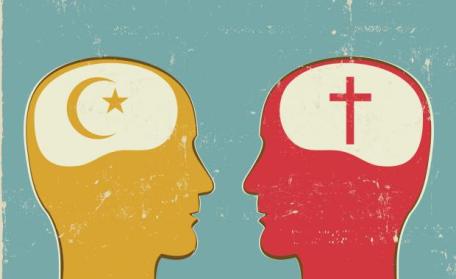
To understand how and why we see the world as we do, we have to breakdown and understand the term of ideology. First of all, ideology is a set of social values, ideas, beliefs, feelings, representations, and institutions by which people collectively make sense of the world they live in. Through this definition its therefore the study of ideas and systems of belief, and how people and societies think, and how meaning is produced by one group to dominate another socially. So we can say that ideology is like a map, that guides our thinking and our actions in this world (social world) (Maurice Cranston, 2015). It affects our way of being and experiencing life and others, and the thinking about our own culture and others. Society maintains itself by reproducing ideology and ideological structures, and reproducing people with attitudes and beliefs that enable them to take their given social position. Thanks to massmedia these people maintain their status without violence by communicating ideas and images to manipulate the ideas and opinions of the people.
The extent to which politics evokes controversy is puzzling. How is it that individuals and groups can be so strongly inspired by an abstract configuration of ideas that they are willing to sacrifice even their own lives in wars? Along with religion, politics is the topic most able to produce conflict at family reunions and on the battlefield. People do not typically come to blows over whether it is better to be an introvert or an extravert, presumably because introverts do not have to worry that they will need to change their behavior as a result of the existence of extraverts. Politics, however, is unavoidably intrusive. The mere presence of liberals (conservatives) creates a very real possibility that conservatives (liberals) in the same polity will not be able to structure society in the fashion they most desire. This potential imposition of values is likely one reason politics is so emotional and explosive ( John R. Hibbing, Kevin B. Smith, John R. Alford, 2014).
So people with different ideologies see, hear and analyze things quite differently, and this influence our behavior and how we make decisions. Our ideological beliefs has led us to cause wars, found countries, ignite revolutions, wage genocide, and create empires. Maybe the most scary part about this must be that we act out the ideology and the idea in a unconscious consciousness way, not always thinking about our motives for doing something. So we can in a way say that everyones identities are constructed by the representation of the society and ideology we grow up in. The cultural process establishes the individual and collective identities. These symbolic systems can provide an answer to the question, who am I? By understanding/making sense of this we can understand our ”given” identity and how to control it (Stephanie Simpson, 2017).
Reference List:
Maurice Cranston, Ideology-society, 2015, [online] available at: https://www.britannica.com/topic/ideology-society
John R. Hibbing, Kevin B. Smith, John R. Alford, Differences in negativity bias underlie variations in political ideology, 2014, [online] available at: http://digitalcommons.unl.edu/cgi/viewcontent.cgi?article=1069&context=poliscifacpub
Stephanie Simpson, Discourse, Ideology & Hegemony, Session 11, 2017
What is Media Culture?
In the world of today, media is considered as a ”mirror” of the modern society. Infect it is media that shapes our lives to a big scale. No doubt, media has played significant role in making world a global village and to reduce the communication gaps amongst the people living in the far areas but unfortunately, media these days has become a commercialized sector. But what do we actually mean whit media culture?
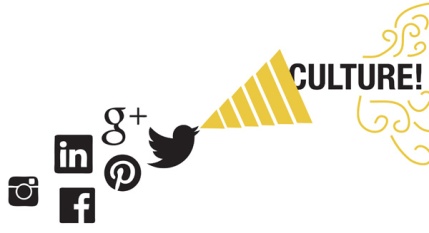
Josh Tolan, 2015
Let’s start by defining culture. According to Georg Simmel, “objective culture is seen as a ‘thing’ and subjective culture as its ‘unique experience”. Culture is experienced, shared and adopted. And we use culture to refer to the acting ut of these shared ideas. Therefore we find ourselves living in a ”media culture”, with media as culture, and media as a reflection of culture.There is a constant circulation of social and cultural forms that play a fundamental role in defining and refining our culture. In today’s world, the easy access to technology creates the situation that, when you look around, people are often using smartphones or using their computers to check on what’s happening in the world around them, providing a feeling of connectedness. Does this ease of connection to the online world hold significant consequences on culture (Sandra, 2013)?
Because we expect more from technology, we start to expect less from each other. Rather than discussing issues in person, we hide behind electronically messages. We do this because technology doesn’t empathize, and doesn’t experience death or disappointments. Instead we select to use technology when we feel vulnerable and technology provides us with an illusion of comfort and of being in control. Constant communication through use of technology is changing the way people think of themselves and how they communicate, and it does have an impact on culture locally and globally as more and more people choose to communicate online instead of in person (Mélodine Sommier, 2014).
One of the great scholars of culture, anthropologist Clifford Geertz, offered this definition. He said, culture is “an historically transmitted pattern of meanings embodied in symbols, a system of inherited conceptions expressed in symbolic forms by means of which men communicate, perpetuate, and develop their knowledge about and their attitudes toward life”.
That’s difficult language, but one can get the idea—culture is historically transmitted knowledge and attitudes toward life expressed in symbolic form. Or perhaps more simply, culture is the expressed and shared values, attitudes, beliefs, and practices of a social group, organization, or institution. It is okey if that still seems broad and fluid. Scholars too wrestle with the term because it must capture so much. Culture should not be easy to define (Jack Lule, 2014).
So to summarize, media culture studies the cultural processes, especially popular culture. The aspects of our lives that so powerfully and unquestionably influence our existence and that are taken for granted. It investigates how all kind of cultural practices construct our everyday lives and how media mould their subjects. These cultural processes form us as individuals, as citizens, as members of a particular race, class and gender construct, and these are all concerned of cultural studies (Stephanie Simpson, 2017).
Reference list:
Sandra, Does technology impact culture?, 2013, [online] available at: https://mediaculturesociety.org/2013/01/29/does-technology-impact-culture/
Mélodine Sommier, The Concept of Culture in Media Studies: A Critical Review of Academic Literature, 2014, [online] available at: https://inmedia.revues.org/768
Jack Lule, Understanding Media and Culture: An Introduction to Mass Communication, 2014, [online] available at: https://catalog.flatworldknowledge.com/bookhub/reader/3833?e=lulemedia_1.0-ch01_s01
Stephanie Simpson, Media Culture session 10, 2017.
Is Stereotyping Good or Bad?
We have all grown up with family, friends and media which has influenced us far enough to create and accept stereotypes. A stereotype is the social classification of particular groups and people as often highly simplified and generalized, which implicitly or explicitly represent a set of values, judgements and assumptions concerning their behavior, characteristics or history. But where does stereotypes come from, and are all types of stereotypes bad?
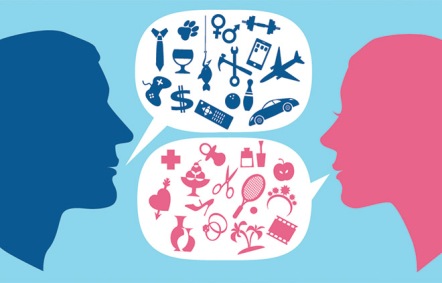
Psychology.iresearchnet, 2016
Recent reachers show that stereotypes tend to cluster around two broad themes. Are members of the group smart and successful? The second theme concerns warmth: Are members of the group likeable, friendly, and unthreatening? Perhaps unsurprisingly, members of the dominant (majority) social group tend to regard their own group as both competent and warm. Many other groups are regarded with a mixture of ambivalent stereotypes. Some groups, such as women and the elderly, are commonly seen as being quite warm but lacking competence, whereas other groups, such as Asians and Jews, tend to be seen by the majority group as being quite competent but lacking in warmth. Only relatively few groups (e.g., the homeless, drug addicts) are seen as lacking on both dimensions. In general, however, this research confirms that the stereotypes of many social groups are marked by at least one negative theme (iresearchnet, 2016).
So what does this tell us? It tells us that we are limited, limited within our own perspective of the world. Much research in recent decades has examined the cognitive processes underlying stereotyping. From this perspective, stereotypes serve a knowledge function, organizing and structuring one’s understanding of the social environment. The social cognition perspective emphasizes that stereotypes arise from the normal, everyday operation of basic mental processes such as attention, memory, and inference. In everyday life, a person is potentially exposed to information about the members of various social groups in diverse ways. We suggest that particular characteristics are shared by many people, and that these characteristics are part of the nature of these people (genetic biological), rather than connected to social construction. So for many instances, stereotypes are used derogatively by dominant groups to describe subordinate groups (Florian Arendt, 2015).
As I have mentioned in the text so far, stereotypes seems to be a bad thing. But stereotypes is also a good and a necessary thing that we humans need to create an idea of how the world work and looks like to be able to navigate and understand different kinds of cultures. This to respect each others differences and be able to work and communicate together. We need to take a step back from the negative and bad stereotypes, and recreate our current understanding of what a group of people really symbolizes. Once an individual is categorized as a member of a particular group, he or she can come to be judged in terms of group-based expectations. In the absence of clear disconfirmation, the person can easily be seen as a “typical” member of that group, interchangeable with other group members. In contrast to such category-based impressions, perceivers can instead judge individuals on the basis of personal attributes, some of which may be typical of their group, but many of which are not. The geographic map of culture is something we humans should be proud of. We should respect each others differences and be able to think a further step with an open mind when it comes to something totally strange unlike ones own culture. Ones nation and culture is absolutely something to be proud of, but one has to be able to filtrate whats been/are bad in ones culture-ideology (Oliver Burkeman, 2012).
Reference List:
Iresearchnet, Stereotypes, 2016, [online] available at: https://psychology.iresearchnet.com/social-psychology/prejudice/stereotypes/
Florian Arendt, Effects of Long-Term Exposure to News Stereotypes on Implicit and Explicit Attitudes, 2015, [online] available at: http://ijoc.org/index.php/ijoc/article/viewFile/2691/1325
Oliver Burkeman, Why stereotypes are bad even when they’re ’good’, 2012, [online] available at: https://www.theguardian.com/commentisfree/oliver-burkemans-blog/2012/dec/12/stereotypes-bad-even-when-good
To Actually Analyze Something
Millennials in todays society are using social media as an type of way to connect about personal, religious and political matters. Putting their trust in all different kind of news and information they see and read on a daily basis on social networks. Millennials are more actively with debating and arguing about news which addresses topics as politics and religion. The big problem here is that they, to a large extent, believe everything they read from ”pop-up” news on the social platforms. Young people tend to act very quick and strongly to things that feels right or that fit into an overall picture of a community´s unity, without the knowledge of the importance analyzing and compare texts and material (Americanpressinstitute, 2015). Why is that?

The biggest problem with the millennials is that it is a generation growing up in the world technology and social media. With the massive amount of information thrown in their faces everyday they will slowly end up careless, careless of anything they read is trustworthy because if Facebook posts something about a political event and a large scale of the users comment the same opinion, then it must be trustworthy, right? No. Because of all this, this generation grows up with a very low self-esteem, because they haven’t allowed themselves to think deeper about things and be critical and compare different sources. They are depending on social media the get the feeling of acceptance and creates this ”fake” world of expectations about themselves and how society works.
In long term this can have a very bad influence on our communities, because people that don’t have the self-esteem to be critical and believe in themselves, and instead look for leaders in media to show them the way of thinking and acting, can in a large group be able to create a society they believe they want and everyone else need, but is only for the benefit of the leaders in media, without knowing (Gavin Fernando, 2017)
Therefore i will now explain the importance of understanding the process of analyzing media and how to do it, with the help of Harold Lasswell´s model or formula of mass communication. He suggested that we can analyze mass media messages at 5 different levels. These levels are: control analysis, content analysis, media analysis, audience analysis and effect analysis. There is also feedback and noise, and this is the last element but is not counted in the 5 different levels.
When we talk about control analysis, we consider who creates or distributes the message we receive. We control the ownership of the medium to provide ourselves with some insight regarding the agenda. In the next level, content analysis, we are partial to the message, or what is said. We treat all messages as texts, even an image because it can be ”read”. We ask ourselves who/what is represented in what way, who is absent and why? This analysis allows us to uncover and be critical of the prejudices that emerge in media and reflect social inequalities that exist beyond the media. Then we come to the next level, media analysis, were we consider the suitability of the channel/medium responsible for transmitting the message. Is it appropriate for reaching the specific audiences that the message tends to communicate with? The 4th level is called the audience analysis, and here we create a detailed profile of our audiences, like how old are they? Male or female? Which social class do they belong? This process is called the demographics of the audience. In this level we also attempt to uncover psychographics, which refers to the thoughts, feelings or desires of our audiences, how they are met or satisfied by the media message, and the product connected to it. The last level, effect analysis, we use to determine to what effect the media have on the audience, and if it does, how has it affected the receivers? The best way to determine the effect is to turn to social media. Then we can turn to feedback and find the noise in the message (anything that disrupts the message) (Communicationtheory, 2016).
Reference list:
Americanpressinstitute, How Millennials Use and Control Social Media, 2015, [online] available at: https://www.americanpressinstitute.org/publications/reports/survey-research/millennials-social-media/
Gavin Fernando, Four main reasons for Gen Y´s Unhappiness, 2017, [online] available at: http://www.news.com.au/lifestyle/real-life/news-life/four-main-reasons-for-gen-ys-unhappiness/news-story/360b4eff77c4f0e4d54a0ca65d73d72f
Communicationtheory, Laswell´s model, 2016, [online] available at:
The Meanings Behind a Text
The Meanings Behind a Text
Most of the things we read in todays society, we understand indirectly, by inference. By analyzing sentence structure and attempting to find meaning within the context of the given situation. A text does not contain a meaning, its up to the reader to construct a meaning through the way they think the words mean, and handle sentences to find meaning.
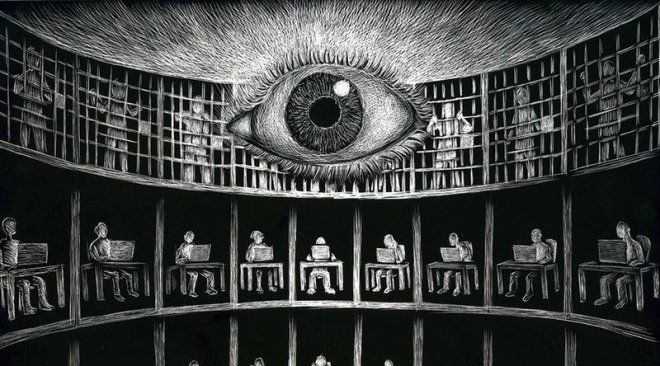
boingboing, 2015
We as readers draw our knowledge from language and conventions of social communication. We infer unstated meanings based on shared knowledge, experience, and values, and by recognition implications we can draw conclusions that makes sense for us. Dan Kurlands´s writes in his article; How the Language Really Works: The Fundamentals of Critical Reading and Effective Writing, that ”inference is essential to, and part of, being human. We engage in inference every day. We interpret actions to be examples of behavior characteristics, intents, or expressions of particular feelings. We infer it is raining when we see someone with an open umbrella. We infer people are thirsty if they ask for a glass of water. We infer that evidence in a text is authoritative when it is attributed to a scholar in the field” (Dan Kurland, 2000).
This is why its important to be critical while reading a text. To have the self-confident in daring to think and criticize. From a young age we are being taught how to read and understand our society in a very constructed and strict way, making us believe everything we read and see without questioning.
Critical reading is about rereading a text to identify patterns of element. These elements are tied together in an interpretation, an assertion of an underlying meaning of the text as a whole. This to accept and decide whats ultimately true. We have to able to read between the lines, this to keep ourselves focused on the bigger perspective. We have to question each other and subjects, and its healthy with disagreements and discussions. Dan Kurland also writes; ”More often than not, disagreements are based not on differences in reasoning, but in the values, assumptions, or information brought to bear. If we believe that all politicians are crooks, we will infer that a specific politician’s actions are scurrilous. If we believe that politicians act for the good of all, we will look for some benefit in their actions. Either way, we will try to use reason to explain the actions. We will look for some coherent explanation as a way of making sense of things. As we saw earlier, if we can understand why someone would do something, why someone might say something, why someone might act in a certain way, we feel we have made sense of the act or statement. It’s like a murder trial: if we can put together opportunity, motive, and means, we can make a case” (Dan Kurland, 2000).
By reading more articles etc. we are able to train our reading skills and become more proficient and get a clearer understanding of different texts meanings. By teaching and introduce this type of thinking to students, starting with every day examples, moving to listening activities, and then to text examples, they will become good readers and make inferences to understand what they are reading. Emphasize that they will bring their own knowledge of events to the text, so each inference may be unique (TeacherVision, 2016).
References:
Dan Kurland, How the Language really Works: The Fundamentals of Critical Reading and Effective Writing, 2000, [online] available at: http://www.criticalreading.com/inference_process.htm
boingboing, 2015, [online] available at: https://boingboing.net/2015/12/31/lessig-on-how-the-economics-of.html
TeacherVision, 2016, [online] available at: https://www.teachervision.com/reading-comprehension/inferences
Media is Representing What & Who?
Media is Representing What & Who?
When we talk about representation we refer to the aspects of ”reality” in the construction of any media, such as people, places, objects, cultural identities and other abstract concepts. What we watch on a TV program is not the same representation of something compared to watching something happen in real-life. All media shows us a version of reality, but not itself, so media representation is all about how a particular person or group of people are being presented to the audience.
But how do we as the audience know when the media we see or read are constructed to a fair natural point of what it reflects?
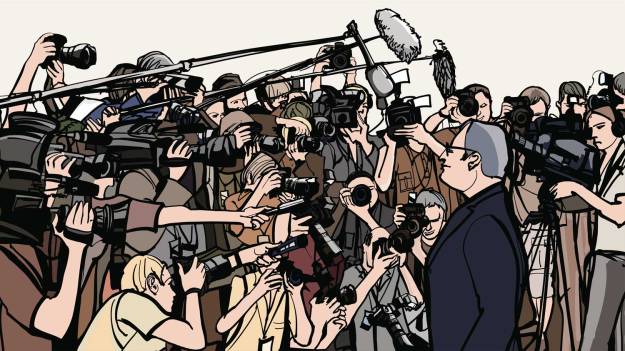 Indian country media network, 2017
Indian country media network, 2017
There are important agents in the public process of constructing, contesting, or maintaining the civic discourse on social cohesion, tolerance, integration, and international understanding. Medias power to direct attention to and from public issues often determines which problems will be tackled or ignored by society, because only issues that gain publicity have the potential to make people think about social and political proliferation beyond their immediate experience and arouse political interest. Mass-media have played a central role in defining and illustrating the different nations in the world, and its content of cultural norms (Elfriede Fursich, 2016).
We can, as an example, look closer on common representations of youth in media. Today we see in modern films we see a representation of youth are usually stereotypically negative, disrespectful, intimidating, and careless. This is not a fair representation of youngsters who tries to create, share positivity, and inspire others to show the world that even young people can be serious and responsible in a positive way of living. The worst part is that Hollywood filmmakers often portrays youth as dumb, irresponsible, drugies, not wanting to be a sensible part of society (Wayne Munie, 2016). They portray drug use in a humorous light way, for example the young main characters in Mike and Dave need wedding dates, which gives the audience the perception that it is harmless and fun to use (Jake Szymanski, 2016).
I really think that we instead should focus on the important and good things we can find in todays youth, and inspire younger generations to become nerdy and passionate about taking care of themselves, work hard, and inspire people in their society. Parents have an important task to educate their children to make informed decisions when watching/reading any type of media that use the content of drugs. By hiding them from the dark side of society doesn’t prepare them to face the real world and standup for their personal beliefs. Because of some strange reason youth have this sad view of what it means to be ”cool”. If you are have an different view on things and do the opposite to what everyone else is doing, because you have a vision of your dream and believe in yourself, then you are weird and a nerd for not acting and thinking like everyone else in society. Rosie Griffin mentions in her article ”Representation of Youth”, that the film Social Network about the Facebook founder Mark Zuckerberg is being portrayed as an negatively awkward and geeky. In a way symbolizing him as an outsider from the typical ”cool” young society, because he is a geek (Rosie Griffin, 2015).
We need to chance the picture of what nerdy is and make it sexy. If media can chance its construction of youth, we the audience can start viewing the young generation as something positive, ambitious, and motivating. Maybe it would inspire more young people to be a good condemnation for others, and not to be afraid of being geeky, because being geeky and hard working is the new sexy. Media need to change the construction of the representation of youth, and especially their position against drugs.
References:
Elfriede Fursich, Media and the representation of Others, 2016, [online] available at: http://www.readcube.com/articles/10.1111/j.1468-2451.2010.01751.x?r3_referer=wol&tracking_action=preview_click&show_checkout=1&purchase_referrer=www.google.se&purchase_site_license=LICENSE_DENIED
Wayne Munie, Drog use is glamorized in film and music, 2016, [online] available at: https://www.quora.com/Does-Hollywood-glamorize-drug-use
Indian country media network, 2017, [online] available at: https://indiancountrymedianetwork.com/culture/social-issues/smithsonian-folklife-festival-natives-mainstream-news/
Jake Szymanski, Mike and Dave Need Wedding Dates, 2016, [online] available at: http://www.imdb.com/title/tt2823054/?ref_=nv_sr_1
Rosie Griffin, Representation of Youth in the media, 2015, [online] available at: https://prezi.com/l2pbqt79ru6a/representation-of-youth-in-the-media/
The Fake World of Private “Entertainment” on Social Media
The Fake World of Private ”Entertainment” on Social Media
Communication with friends and family fast and across long distances has been a problem and concern of humans for centuries. Social media has during the last 15 years exploded at an enormous speed, and by 2006 when Facebook and Twitter both became available, people all around the world got the access of becoming an social media user. Today there is wide range of social networking sites to choose between, and many of them cooperate by allowing cross-posting. So its no wonder that everyone uses social media as much as they do, when its so easily accessible. But what is it about social media that makes us so addictive to it? (Drew Hendricks, 2013).
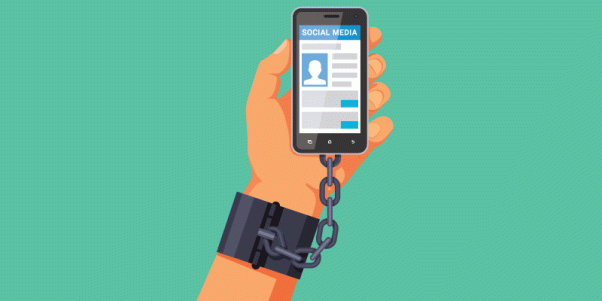 Shutterlock, 2016
Shutterlock, 2016
We have to create an online presence for ourselves, to be able to handle all the information the largely global society we live in gives us. But the perception of ourselves online is not ones ”real self”, but ones ”ideal self”, what we one feel he/she should be. R. Kay Green writes in her article ”The Social Media Effect: Are You Really Who You Portray Online?”, that ”As we know, perception is everything; especially in the world of social media. In terms of perception, we all have an ideal self. We all wish to maximize our careers, our profession, and aspire to be like those who we find most successful. As the use of social media continues to evolve; the concept of presenting our ideal selves versus our real selves has become more and more prevalent on social media platforms such as Facebook, Twitter, Instagram, Google+, Pinterest, and even LinkedIn. As research suggests, your “real self” is what you are – your attributes, your characteristics, and your personality. Your “ideal self” is what you feel you should be; much of it due to societal and environmental influences. From a societal standpoint, many of us are driven by competition, achievement, and status; hence, the creation and portrayal of our ideal selves” (R. Kay Green, 2013).
So the social media addiction partly depends on our confirmation needs to ourselves and others, but are we really presenting who we are, or are we presenting a perfect-idealistic version of ourselves? The use of likes, comments, fans, posts etc. is an esteem booster of false self-esteem. So when we all are bored of our everyday life, we ”find happiness” in others ”perfect” lives on, for example, Instagram. Nick Zagorski mentions in his article ”Using Many Social Media platforms Linked With Depression, Anxiety Risk”, that research has suggested a link between spending extended time on social media and experiencing negative mental health outcomes. New evidence suggests that whether its distracted attention from using multiple social media outlets or the emotional consequences of a negative online experience, it’s the quality—not so much the quantity—of social media engagement that may affect mood and well-being. By multitasking between several different social media applications increases the risk of anxiety in trying to keep up with the rules and cultures associated with social attention (Nick Zagorski, 2017).
We need to take a step back behind the fake scenes of social media, and think of the whole to open our eyes and try to be true to ourselves. To stop comparing us with others, because the lives of others we see on Instagram or Facebook is just an perception of what we think the person is. Its not a true representation. Stop creating a unrealistic version of ourselves and instead focus on ones best true attributes. Everything about your online persona should be reflected of your offline persona (Jenny Q. Ta, 2014). Its up to each one of us users to use social applications wisely to enhance our professional and social life. By doing so, we will become more fulfilled as we accomplish the goals that will lead to our best ”real” us.
References:
Drew Hendricks, Complete History of Social Media: Then And Now, 2013, [online] available at: https://smallbiztrends.com/2013/05/the-complete-history-of-social-media-infographic.html
R. Kay Green, The Social Media Effect: Are You Really Who You Portray Online?, 2013, [online] available at: http://www.huffingtonpost.com/r-kay-green/the-social-media-effect-a_b_3721029.html
Nick Zagorski, Using Many Social Media Platforms Linked With Depression, Anxiety Risk, 2017, [online] available at: http://psychnews.psychiatryonline.org/doi/full/10.1176/appi.pn.2017.1b16
Jenny Q. Ta, What Impact Has Social Media Truly Had On Society, 2014, [online] available at: http://www.business2community.com/social-media/impact-social-media-truly-society-0974685#O6VqBDYlZLxlmgYW.97
Shutterlock, Switch to alternatives and connect with people in person, 2016, [online] available at: https://yourstory.com/2016/08/social-media-addiction-tips/